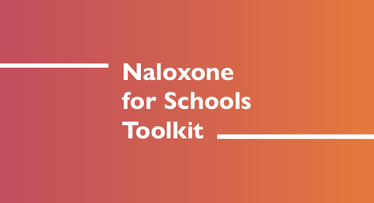|
In response to the increased risk of opioid overdoses on school campuses, the San Mateo County Coalition for Safe Schools and Communities developed the Naloxone for Schools Program and Toolkit. Naloxone hydrochloride (naloxone) is a safe and effective way to reverse and opioid overdose. The Food and Drug Administration approved naloxone to treat overdoses in 1971, and paramedics and hospitals have been using it to successfully reverse opioid overdoses for decades.
The Naloxone for Schools Program, along with its accompanying toolkit, provides schools with the information they need to identify and respond to an opioid overdose on campus, training on how to use naloxone (also known by the product name Narcan), access to naloxone, and supporting documents and communication tools. The Naloxone for Schools Program is intended to supplement district and school drug awareness and education programs. The Coalition’s program is unique in the state because it facilitates schools’ access to naloxone and related support as a countywide protocol. While the State’s Naloxone Distribution Project requires districts and charter and private schools to complete training and apply individually for naloxone from the State, the San Mateo County program streamlines the application, training, and reporting process for districts and schools through the County Office of Education and provides support and coordination. Naloxone currently requires a prescription, which the San Mateo County Office of Education has obtained through a Statewide Standing Order for schools and districts participating in the program. The San Mateo County Office of Education, which administers the program for the Coalition for Safe Schools and Communities, is able to get product out quickly to districts, answer questions, and provide staff training. All of San Mateo County’s school districts, including the County Office of Education, are participating in the Naloxone for Schools Program. Approximately, two-thirds have already completed the training and onboarding and have received a distribution of naloxone from the County Office of Education. The San Mateo County Board of Education updated its Board Policy 5141, Administering Medication and Monitoring Health Conditions, to enable the use of naloxone on SMCOE school sites: The Superintendent or designee shall make naloxone hydrochloride or another opioid antagonist available for emergency medical aid to any person suffering, or reasonably believed to be suffering, from an opioid overdose. The Naloxone for Schools Toolkit recommends that school districts adopt a board policy addressing the administration of naloxone and includes a sample template. Legislators are currently looking at requiring schools to maintain doses of naloxone on campus (e.g. SB 234). The San Mateo County Office of Education will continue to support districts through training, oversight and reporting, and reordering and restocking.
0 Comments
State Superintendent Tony Thurmond Announces Programs to Tackle Disproportionate Discipline in Schools
Excerpts from Press Release: "Superintendent Thurmond has long championed programs to help reduce disproportionate school discipline, starting with his authorship (while in the Assembly) of Assembly Bill (AB) 1014 (Ch. 397, Stats. 2016) which, as of this year, will have resulted in $140.8 million in Proposition 47 grants being moved from the criminal justice system to school prevention grants to help schools reduce suspensions and chronic absenteeism. In 2022, Superintendent Thurmond co-sponsored AB 2806 (Ch. 915, Stats. 2022) by Assemblymember Blanca Rubio (D-Baldwin Park) to ban expulsion of preschool students, which was signed into law by Governor Gavin Newsom. Superintendent Thurmond is also sponsoring Senate Bill 274 by Senator Nancy Skinner (D-Berkeley), which will ban suspensions for willful defiance. “We have to educate our kids—not incarcerate them—and provide them with opportunities for learning and to succeed,” Thurmond said. “Taking students out of learning time through suspensions and expulsions is proven to push them toward the criminal justice system. School districts trying to hide actual discipline rates through practices such as masking expulsions as transfers will not be tolerated.” Amid reports that some districts have pushed families toward voluntary or involuntary transfer to avoid reporting expulsions, Superintendent Thurmond and the California Department of Education (CDE) are establishing a tip line. This can be used by school staff, parents, students, or community members to report any district involved in practices to mask the use and reporting of discipline or to report disciplinary practices that violate California Education Code, and the CDE will look into these matters." *** As a member of the County Board of Education, I have heard from a number of Board Trustees in our local districts that they are primarily implementing "administrative expulsions," in their districts, to avoid the "official" expulsion process. According to this new guidance and initiative from the CDE, we may need to look closer at this data (which is not reported in the same way) to reveal the impact of these practices on student outcomes and the well-intentioned efforts to halt the "school to prison pipeline." Find the CDE's 2/15/23 Press release at: https://www.cde.ca.gov/nr/ne/yr23/yr23rel12.asp |
Archives
August 2023
Categories |
|
Working Every Day to Create Opportunity, Inclusion & Accountability in San Mateo County Schools |
Copyright © 2021


 RSS Feed
RSS Feed
